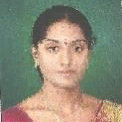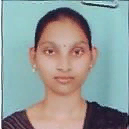International Journal of Image, Graphics and Signal Processing (IJIGSP)
IJIGSP Vol. 7, No. 6, 8 May 2015
Cover page and Table of Contents: PDF (size: 706KB)
A Multi-Scale Image Enhancement Model using Human Visual System Characteristics
Full Text (PDF, 706KB), PP.1-9
Views: 0 Downloads: 0
Author(s)
Index Terms
Image enhancement, human visual system, luminance masking, contrast masking, multi-scale transforms and dual tree complex wavelet transform
Abstract
Image enhancement is a fundamental pre-processing step for many automated systems and vision systems. Many enhancement algorithms have been anticipated based on different sets of criteria. One of the most widely used algorithms is the direct multi-scale image enhancement algorithm. The specialty of this algorithm is, it provides contrast enhancement, tonal rendition, dynamic range compression and accurate edge preservation of the images. It also provides these features to the individual images and/or simultaneously to the images. In this proposed method, a multi-scale image enhancement algorithm is established by using parametric contrast measure with the transform techniques such as Laplacian pyramid, discrete wavelet transform, Stationary wavelet transform and Dual-tree complex wavelet transform. The new contrast measure provides both the luminance and contrast masking characteristics of the human visual system. The proposed method is used to attain simultaneous local and global enhancements. The enhancement measures such as Entropy, Mean opinion score and Measure of enhancement gives better results than the existing methods.
Cite This Paper
M Venkata Srinu, G Naga Swetha, M Deepthi,"A Multi-Scale Image Enhancement Model using Human Visual System Characteristics", IJIGSP, vol.7, no.6, pp.1-9, 2015. DOI: 10.5815/ijigsp.2015.06.01
Reference
[1]S. Agaian, "Visual morphology," Proc. SPIE, vol. 3646, pp. 139–150, Mar. 1999.
[2]B. Bhanu, J. Peng, T. Huang, and B. Draper, "Introduction to the special issue on learning in computer vision and pattern recognition," IEEE Trans. on Systems, Man, and Cybern. B: Cybern., vol. 35, no. 3, pp. 391–396, Jun. 2005.
[3]M. K. Kundu and S. K. Pal, "Thresholding for edge detection using human psychovisual phenomena," Pattern Recognit. Lett., vol. 4, no. 6, pp. 433–441, 1986.
[4]E. Wharton, S. Agaian, and K. Panetta, "Adaptive multi-histogram equalization using human vision thresholding," Proc. SPIE, vol. 6497, p. 64970G, Jan. 2007.
[5]J. Tang, E. Peli, and S. Acton, "Image enhancement using a contrast measure in the compressed domain," IEEE Signal Process. Lett., vol. 10, no. 10, pp. 289–292, Oct. 2003.
[6]A. Grigoryan and S. Agaian, "Image Enhancement," in Advances in Imaging and Electron Physic. New York, NY, USA: Academic, May 2004, pp. 165–243.
[7]K. Panetta, S. Agaian, Y. Zhou, and E. J. Wharton, "Parameterized logarithmic framework for image enhancement systems," IEEE Trans.Man, Cybern., B, Cybern., vol. 41, no. 2, pp. 460–473, Feb. 2011.
[8]K. Panetta, S. Agaian, S. Nercessian, and A. Almunstashri, "Shape dependent canny edge detector," Opt. Eng., vol. 50, no. 8, pp. 087008-1–087008-12, 2011.
[9]E. Wharton, K. Panetta, and S. Agaian, "Human visual system based multi-histogram equalization for non-uniform illumination and shadow correction," in Proc. IEEE Int. Conf., vol. 1. Apr. 2007, pp. 729–732.
[10]F. Yang, Y. Chang, and S.Wan, "Gradient-threshold edge detection based on the human visual system," Opt. Eng., vol. 44, no. 2, p. 020205, Feb. 2005.
[11]B. M. T. H. Romeny, Front-End Vision and Multiscale Image Analysis: Introduction to Scale-Space Theory. Norwell, MA, USA: Kluwer, 1997.
[12]A. V. Rangan, L. Tao, G. Kovacic, and D. Cai, "Multiscale modeling of the primary visual cortex," IEEE Eng. Med. Biol. Mag., vol. 28, no. 3, pp. 19–24, May–Jun. 2009.
[13]K. Panetta, E.Wharton, and S. Agaian, "Logarithmic edge detection with applications," J. Comput. Process., vol. 3, no. 9, pp. 11–19, Sep. 2008.
[14]G. Buchsbaum "An analytical derivation of visual nonlinearity," IEEE Trans. Biomed. Eng., vol. 27, no. 5, pp. 237–242, May 1980.
[15]A. Liu, W. Lin, M. Paul, C. Deng, and F. Zhang, "Just noticeable difference for images with decomposition model for separating edge and textured regions," IEEE Trans. Circuits Syst. Video Technol., vol. 20, no. 11, pp. 1648–1652, Oct. 2010.
[16]S. Nercessian, K. A. Panetta, and S. S. Agaian, "A multi-scale nonlocal means algorithm for image de-noising," Proc. SPIE, vol. 8406, pp. 84060J-1–84060J-12, May 2012.
[17]S. G. Mallat, "A theory for multiresolution signal decomposition: The wavelet representation," IEEE. Trans. Pattern Anal. Mach. Intell., vol. 11, no. 7, pp. 674–693, Jul. 1989.
[18]S. G. Mallat, "A theory for multiresolution signal decomposition: The wavelet representation," IEEE. Trans. Pattern Anal. Mach. Intell., vol. 11, no. 7, pp. 674–693, Jul. 1989.
[19]W. Selesnick, R. G. Baraniuk, and N. G. Kingsbury, "The dual-tree complex wavelet transform," IEEE Signal Process. Mag., vol. 22, no. 6, pp. 123–141, Nov. 2005.
[20]Sos S. Agaian, Karen P. Lentz, and Artyom M. Grigoryan, "A New Measure of Image Enhancement", in Division of Engineering, IEEE Trans. Man, Cybern., B, Cybern., vol. 41, no. 2, pp. 460–473, Feb. 2000.
[21]Methods for Subjective Determination of Transmission Quality, International Telecommunication Union (ITU), Geneva, Switzerland, Aug. 1996.


